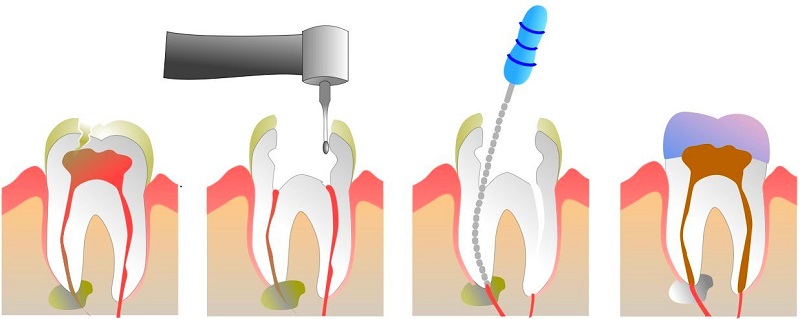Keeping your teeth healthy requires daily brushing and flossing as well as semi-annual professional cleanings and dental exams by your dentist. But even when you are meticulous with your oral hygiene, the foods and beverages you consume and even trauma may cause decay and lead to serious dental problems. In some cases, irreversible damage can be caused to the pulp, which may require a root canal treatment.
What is a root canal?
The tooth has a crown and a root, made of enamel and cementum. Underneath these structures is the dentin, which serves as a chamber for the tooth pulp. A root canal is a hollow space inside the root, where the lower part of the pulp is located. The term root canal also refers to the procedure your dentist uses once this pulp becomes irreversibly inflamed and needs treatment.
In which conditions do you need a root canal?
Tooth decay refers to the destruction of the tooth’s hard tissues like enamel and dentin by pathogenic bacteria. If left untreated, this infection can affect the pulp, causing pain and damage. Root canal treatment is required to prevent the infection from spreading into the tissues that surround the teeth. This involves removing the pulp and cleaning of the tooth’s canal system. This procedure is very common and can be performed by a dentist in Amersham.
Specific symptoms can indicate an ongoing infection that requires treatment. Exposure to hot or cold foods may cause lingering sharp pain, which is the primary sign that a root canal treatment is needed. Symptoms like gum swelling near the site of infection, painful chewing, foul odour, and others may be present as well. If swelling is visible extraorally, or there are swollen lymph nodes, contacting an emergency dentist in Amersham may be advisable.
Root canal treatment things you need to know
Root canals are relatively routine procedures in the dental office. With that being said, there are a few things to consider as you start looking for treatment.
- – The pain from root canals comes due to the infection, not from the treatment. Once the procedure has started, the pain will subside with the removal of the infected pulp. The primary goal of the treatment is to remove the infection and pathogens from the root canals. Root canal treatment undeservedly has a bad reputation but is no more invasive than a filling.
- – With today’s technology, patients can enjoy a much more comfortable root canal procedure. The combined use of disinfectant solutions and special lasers provides better effectiveness, precision, and comfort for the patient.
- – Antibiotics medicine is not an alternative treatment for a root canal. If the inflamed pulp and the affected tissues are not removed, the infection will persist until it is.
- – The root canal is more efficient and cost-effective than a bridge or an implant. These restorative procedures require tooth extraction, which should always be a last resort. A root canal can save your tooth and your smile.
- – A root canal can help in improving your smile and the tooth’s appearance. After a root canal, you will most likely receive a crown to protect the structure of your tooth. Crowns cover the tooth above the gumline hiding cosmetic discolourations and other imperfections.
A root canal treatment can help improve oral health and keep a smile beautiful. Getting the procedure done is a great first step toward improving overall health and saving an at-risk tooth.




